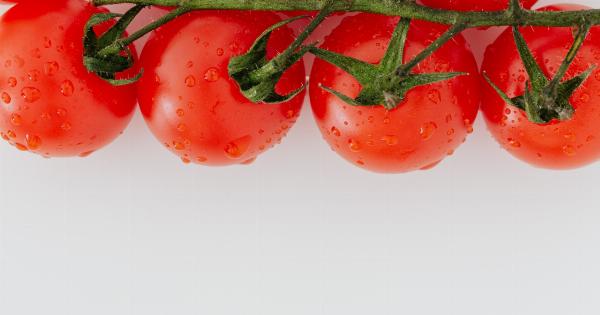Food is an essential part of our lives, and it plays a crucial role in determining our overall happiness. We all have heard the phrase “you are what you eat,” and it is true.
The food we consume has a direct impact on our physical and emotional well-being. However, what many people often overlook is the impact of food color on our happiness.
Understanding the Psychology of Color
Colors have a powerful effect on our brain and emotions. Different colors evoke different feelings and emotions. For example:.
- Red is associated with passion, love, and excitement. It can stimulate the appetite
- Yellow is associated with happiness, sunshine, and warmth
- Green is associated with freshness, growth, and nature. It can promote relaxation
- Blue is associated with calmness, serenity, and tranquility
- Purple is associated with creativity, luxury, and mystery
Knowing the psychology of color can help us make better food choices that can contribute to our overall well-being.
The Effect of Food Color on Our Mood
Research has shown that food color can have a significant impact on our mood and emotions. Here are some examples:.
Red
Red is a warm and vibrant color that stimulates the appetite and increases our heart rate and blood pressure. It is commonly used in fast-food chains to grab attention and entice customers to buy more food.
However, too much red can also make us feel anxious and agitated.
Yellow
Yellow is a cheerful and uplifting color that evokes feelings of happiness and optimism. It is commonly used in fast-food chains because it can enhance our mood and increase our appetite.
However, too much yellow can also be overwhelming and cause us to feel anxious.
Green
Green is a calming and refreshing color that can help us feel relaxed and at ease. It is commonly associated with health and well-being and used to promote natural and organic foods.
Green foods such as leafy vegetables, broccoli, and kiwi fruit are rich in nutrients and fiber that can boost our mood and energy levels.
Blue
Blue is a soothing and serene color that can help us feel calm and peaceful. It is commonly used in higher-end restaurants to create a relaxing and luxurious atmosphere.
However, blue foods are not common in our diets, and consuming too much blue food (such as blueberries or blue-colored drinks) can result in a feeling of sadness or melancholy.
Purple
Purple is a royal and majestic color that evokes feelings of luxury and creativity. It is not commonly found in food, but it can be used in drinks or desserts to create a sense of indulgence.
Consuming purple foods such as grapes, berries, and eggplants can provide us with antioxidants and other nutrients that can enhance our mood and cognitive function.
The Benefits of Eating Colorful Foods
Eating a diverse range of colorful foods can provide us with numerous health benefits. Here are some examples:.
Increased Nutrient Intake
Colorful foods are rich in a variety of nutrients, including vitamins, minerals, and antioxidants. By consuming a diverse range of colorful foods, we can increase our nutrient intake and support our overall health and well-being.
Improved Mood and Emotions
As we have already seen, food color can have a significant impact on our mood and emotions. By being mindful of the color of the foods we consume, we can choose foods that promote feelings of happiness, relaxation, and creativity.
Better Digestion
Consuming a diverse range of colorful foods can also promote better digestion and gut health.
Different colors of foods contain different types of fiber and prebiotics that can feed the beneficial bacteria in our gut and promote regularity and a healthy gut microbiome.
Lower Risk of Chronic Disease
Research has shown that consuming a diverse range of colorful foods can lower our risk of chronic diseases such as heart disease, cancer, and diabetes.
The varied nutrients and antioxidants present in colorful foods can protect our cells from damage and inflammation.
Conclusion
The food we consume has a direct impact on our physical and emotional well-being. By being mindful of the color of the foods we consume, we can enhance our mood, emotions, and overall happiness.
Eating a diverse range of colorful foods can provide us with numerous health benefits and protect us from chronic diseases.































